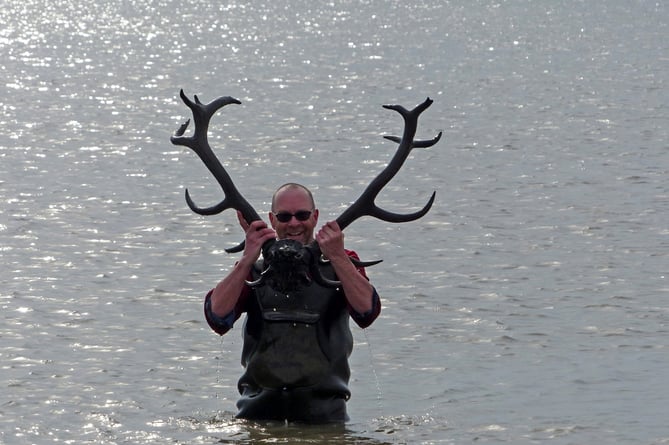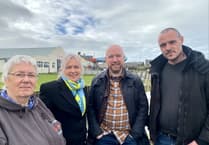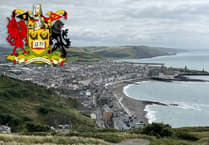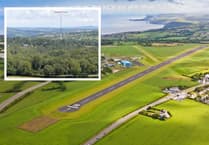A SET of antlers that date back 3,000 years will return to Borth for a special exhibition into the history of the village and its coastline.
The exhibition, which will be held in Borth Railway Museum, will tell the story of the submerged forest at Borth and other archaeological discoveries associated with the forest.
It is linked to an on-going project in the area called Portalis which is examining the archaeological record of the earliest peoples in west Wales and south east Ireland after the last glaciation.
Portalis is a new cross-border pilot project that aims to explore the earliest connection between Ireland and Wales.
Supported by €1.5m from the European Regional Development Fund, through the Ireland Wales Cooperation programme, the project is led by Waterford Institute of Technology, supported by UWTSD, Ceredigion County Council, and Waterford Chamber of Commerce.
The centre piece of the exhibition is the set of Red Deer antlers first spotted by Julien Culham and Sharon Davies-Culham in early April 2016.
The deer is known to have lived and died somewhere between 1200 and 1000 BC - the middle part of the Bronze Age.
Speaking to the Cambrian News in 2016, at the time of the discovery of the antlers, Dr Bates of the University of Wales Trinity Saint David, said: “I had thought that it would be in excess of 4,000, or even 6,000, years old but this is considerably younger than any of us anticipated.
“What this date tells us is that dry land persisted in this place at least until the Bronze Age, which means that the flooding here was therefore more recent than previously thought.
“The antlers have therefore totally changed our understanding of what happened to this landscape in the past”.
The sands and silts in which the antlers were found were also examined, which revealed that the environment in which they were found was one of saltmarsh and tidal channels.
Dr John Whittaker of the Natural History Museum in London said: “The microfossils that are present in the sands only survive in saltmarsh conditions so I have no doubt that the remains of this beast came to rest in a small gully perhaps cutting through a grassy saltmarsh”.
The exhibition is open on Tuesdays, Wednesdays, Thursdays and Saturdays from 12pm to 4pm, throughout August and through to the start of September - the exhibition ends on 3 September.
Visitors to the Borth Railway Museum, those with an interest in Mesolithic archaeology or an interest in local archaeology will no doubt be keen to go, and, on 27 August, Professor Bates will lead a walk on the foreshore at Borth to explore the forest.
The tour will begin from Borth railway station at 2pm.




